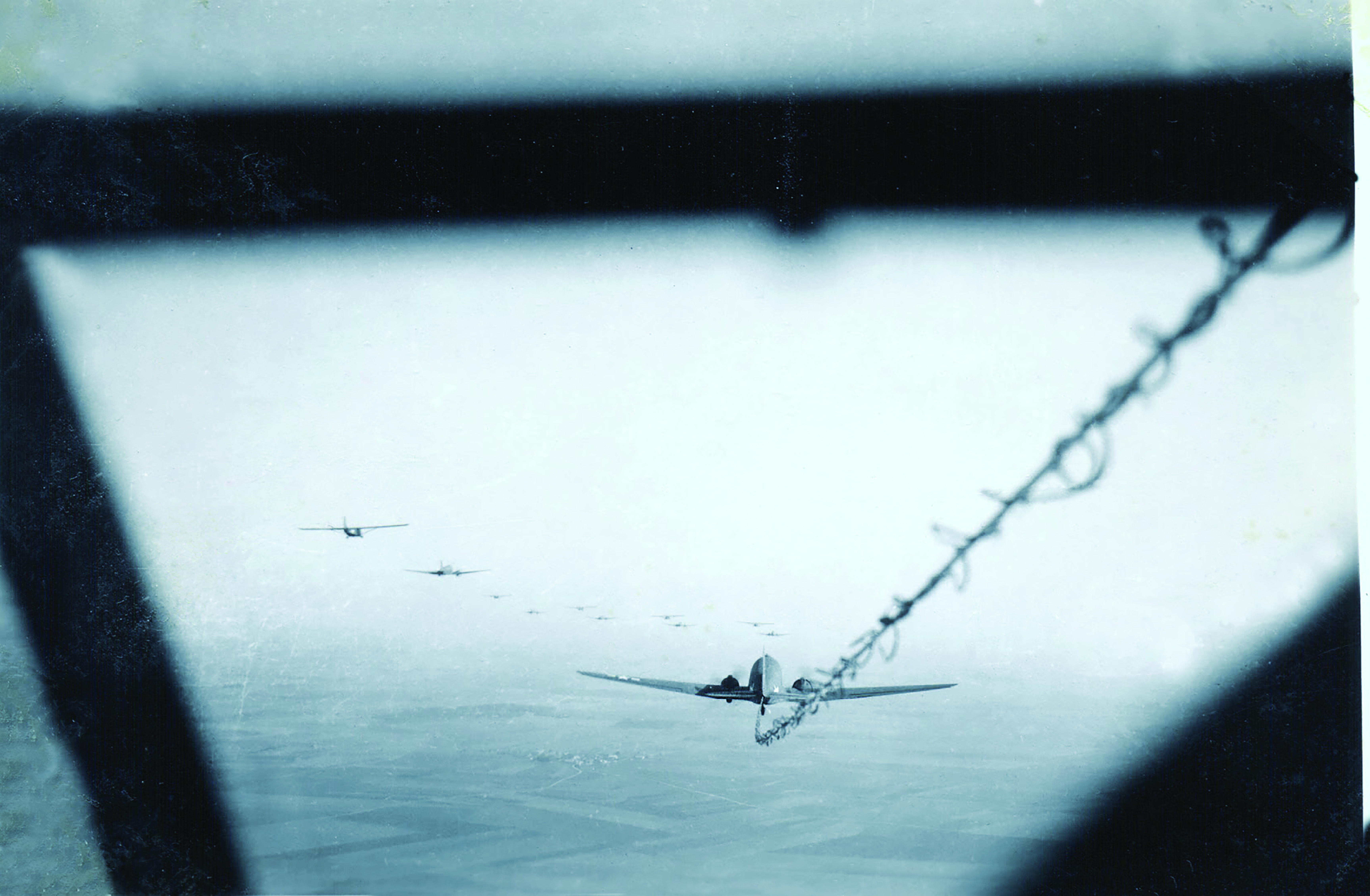Infantrymen ferried into Nazi Germany via glider fought to seize 10 key bridges during Operation Varsity.
ON THE MORNING OF March 24, 1945, an Allied armada of more than 1,500 powered aircraft and 1,300 gliders converged over the central Belgian town of Wavre. The aircraft had departed from 23 airfields in England and France; for their pilots, Wavre served as the command assembly point over which all aircraft formations changed course for their approach to drop zones on the east side of the Rhine River.
Drawn outside by the reverberating sound of droning engines, its residents gazed skyward as the air columns came together in a cloudless blue sky to form the war’s largest single-day airborne armada. It was about 9 a.m.; close to 500 British and American fighter escorts, darting about like angry hornets on all flanks, added to the mighty display. Anyone wanting to watch the entire spectacle would have to wait more than three hours for the fleet to pass.
Onlookers were witnessing the voyage of two Allied airborne divisions—the American 17th and the British 6th—on their way into Germany to participate in an operation codenamed “Varsity.” Following a nine-month campaign that had begun on the beaches of Normandy, the Allies were now on the threshold of kicking in the door to the Third Reich.
But first, they had to cross the Rhine.
Preparation for the crossing—given the overall code name “Plunder”—had been so monumental that it was impossible for the enemy not to notice. The stockpiling of bridging equipment, the increasing bombing campaigns, the movement of troops, the Allied airfields in France overcrowded with C-47 transports and olive-drab gliders—all had served to put the Germans on high alert. Nazi propaganda broadcasts made it clear that any element of surprise was long gone.
The two airborne divisions were to drop into enemy territory on the east bank of the Rhine, outside the town of Wesel in western Germany. There they were to secure a perimeter some five miles wide to shield the British, Canadian, and American ground troops of Field Marshall Bernard Montgomery’s assault river crossing, underway since 10 p.m. the previous evening. The paratroopers were expected to hold their positions for 24 hours until the ground troops swarming across the 400-yard-wide river could arrive and reinforce them.
Meanwhile, the enemy was waiting.
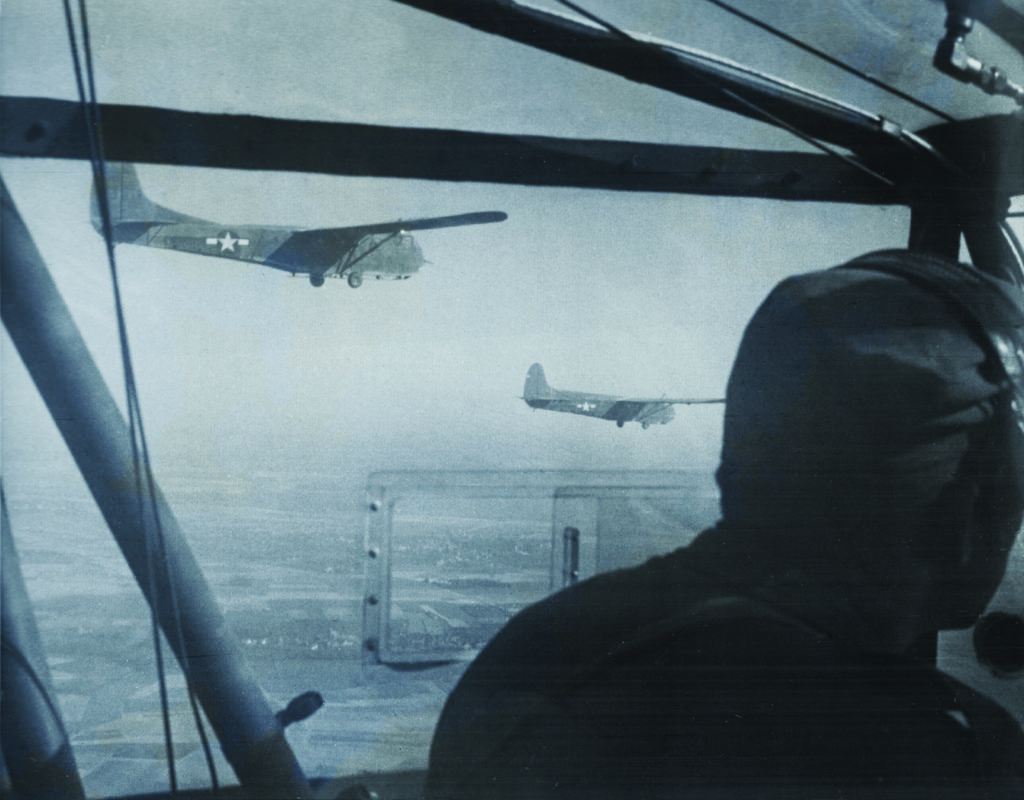
THE BRITISH AIRBORNE TROOPS were responsible for the western flank of the perimeter, while the 17th Airborne would land farther east. Leading the American column, in 298 aircraft, were paratroopers of the 507th and 513th Regimental Combat Teams. Their mission was to secure the high ground overlooking the Rhine and establish the perimeter’s northern boundary.
The paratroopers were followed by 906 gliders being towed to their landing zones. Nearly two-thirds of the boxy, canvas-covered aircraft carried the U.S. 194th Combat Team, which consisted of the 194th Glider Infantry Regiment plus supporting medics, engineers, artillery, and antitank guns. Their destination was Landing Zone S on the eastern edge of the perimeter. The glider-borne infantry, or “glider riders,” arguably had the most vital task: blocking German counterattacks from the eastern flank by seizing bridges over the Issel River and Issel Canal, north of the Rhine. Several of those bridges could support the weight of armored vehicles; the Allies needed to take them intact so they could use them to break out of the perimeter and continue the offensive into Germany.
Planners had numbered the bridges for easy reference. Starting in Wesel and moving counterclockwise, the bridges over the canal were numbered 1 through 4 and were to be seized by the 194th’s 2nd Battalion. Bridges 5 through 10—over the river—were the 1st Battalion’s goal. The 3rd Battalion, plus supporting artillery and antitank guns, would land after the two assault battalions.
The gliders—Waco CG-4As—gave the 194th the advantage of bringing in heavier weapons, and of landing squads intact as fighting elements. In their cargo holds the gliders could carry 13 men, or a jeep and three men, or a 75mm howitzer (or, if positioned just right, an M3 105mm howitzer) along with up to three men. The troopers had packed the gliders to capacity to squeeze as many men and as much materiel into the perimeter as possible. Many of the C-47s were also lugging in two gliders instead of the customary one.
For three hours the gliders had pitched and yawed behind the tow planes as their pilots strained to keep them steady against the turbulence. Despite the pilots’ efforts, the fully loaded—and in some cases, overloaded—aircraft were buffeted about in the armada’s agitated prop wash. It was exhausting work, with pilots and copilots swapping turns at the controls to reduce fatigue. Many veteran pilots complained it was the worst turbulence they’d ever experienced.
In the back, passengers braced themselves against unpredictable updrafts and downdrafts. Private Jim Lauria had secured a rope along the length of the cargo area to give himself a handhold as he periodically maneuvered around his 75mm howitzer to inspect its tie-downs during the bumpy flight.
Another gun crew hadn’t been so diligent, and their M3 105mm howitzer worked itself loose. Staff Sergeant Jimmie Taylor screamed over the racket of the wind slapping at the canvas fuselage to get his crew into action. As the 2,400-pound gun threatened to upset their center of gravity, Taylor and another trooper muscled it back into place. Vomit all over the plywood floor made their work more precarious, as they kept slipping in it.
Just before 10:30 a.m. the first American glider, still under tow, crossed the Rhine. As they passed over, Lieutenant Colonel John Paddock, a passenger and commander of the 17th Airborne’s antitank battalion, made a ceremony of tossing an empty champagne bottle into the river as they officially crossed into Nazi Germany. He’d popped the cork earlier, passing the bottle around during their flight. “I figured the dice were cast, might as well enjoy ourselves,” he later recalled.
Down below, Montgomery’s Allied troops darted across the river in their amphibious assault craft. German artillery shattered the water’s surface with exploding geysers. Enemy antiaircraft fire, or flak, targeted the Allied aircraft as they approached the river. The Germans’ heavier guns—the big 88s and 105s—got the range first. The coal-black clouds of bursting flak drifted past as the gliders were towed relentlessly onward. In their cockpits, the glider pilots could smell the rotten-egg stench of exploding ack-ack shells.
They were six miles from the landing zone; red lights flashed from the C-47 navigators’ glass domes, signaling to the glider pilots that they were almost there. Stand by.
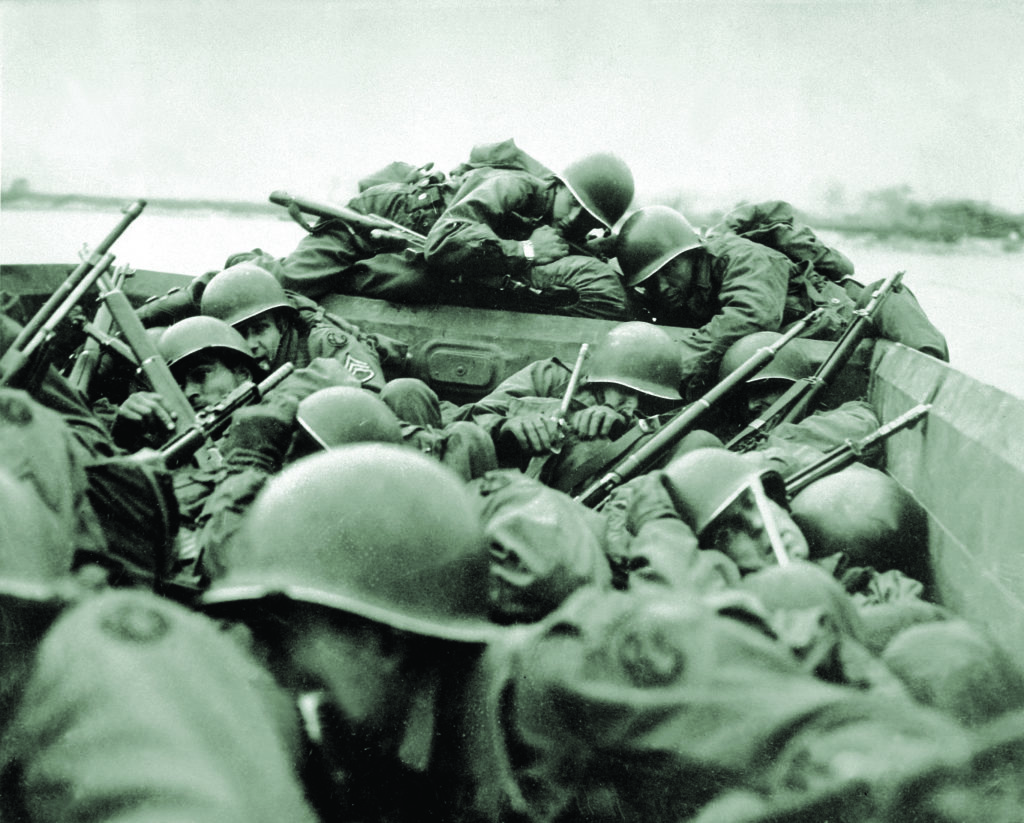
SOME DIDN’T MAKE IT. The two lead aircraft were shot down a mile short of Landing Zone S; pilots of the towed gliders cut loose to avoid being pulled into the ground. Out of the first 40 tow aircraft, 36 were hit. In the next hour, German gunners would down 10 more C-47s and damage another 140.
As the formation reached the edge of the landing zone, green lights replaced the red standby signal. Release when ready. The first glider pilot did so at 10:36 a.m., sending the tow rope snapping forward and his glider into descent. For the next hour, more gliders did the same roughly once every six seconds.
In one glider, Associated Press reporter Howard S. Cowan had his eyes glued on his pilot. Cowan wanted to cast off as soon as possible; the flak was loud and close. The fabric-covered gliders offered virtually no protection.
After what seemed like hours, the pilot shouted over his shoulder, “Going down!” With a flick of the release toggle, the glider pitched forward into a steep dive. No longer being towed, the passengers heard the howl of the wind decrease, only to be replaced by the distinct sounds of bursting flak and the rattle of German machine guns. Seconds later, Cowan was startled by the POP-POP of shrapnel puncturing the taut canvas skin of the glider on one side and slicing its way out the other.
Advised the sergeant sitting across from him: “Now is when you pray.”
Glider pilot George Buckley, who at age 19 was already a veteran of multiple combat operations, said the flak was the heaviest he’d seen yet. But the aircraft formations bore straight through it without taking evasive action. He recalled: “A C-47 in front of us with one engine out and with flames streaming back over its wing held to a steady course, determined to get its two gliders to the [landing zone].”
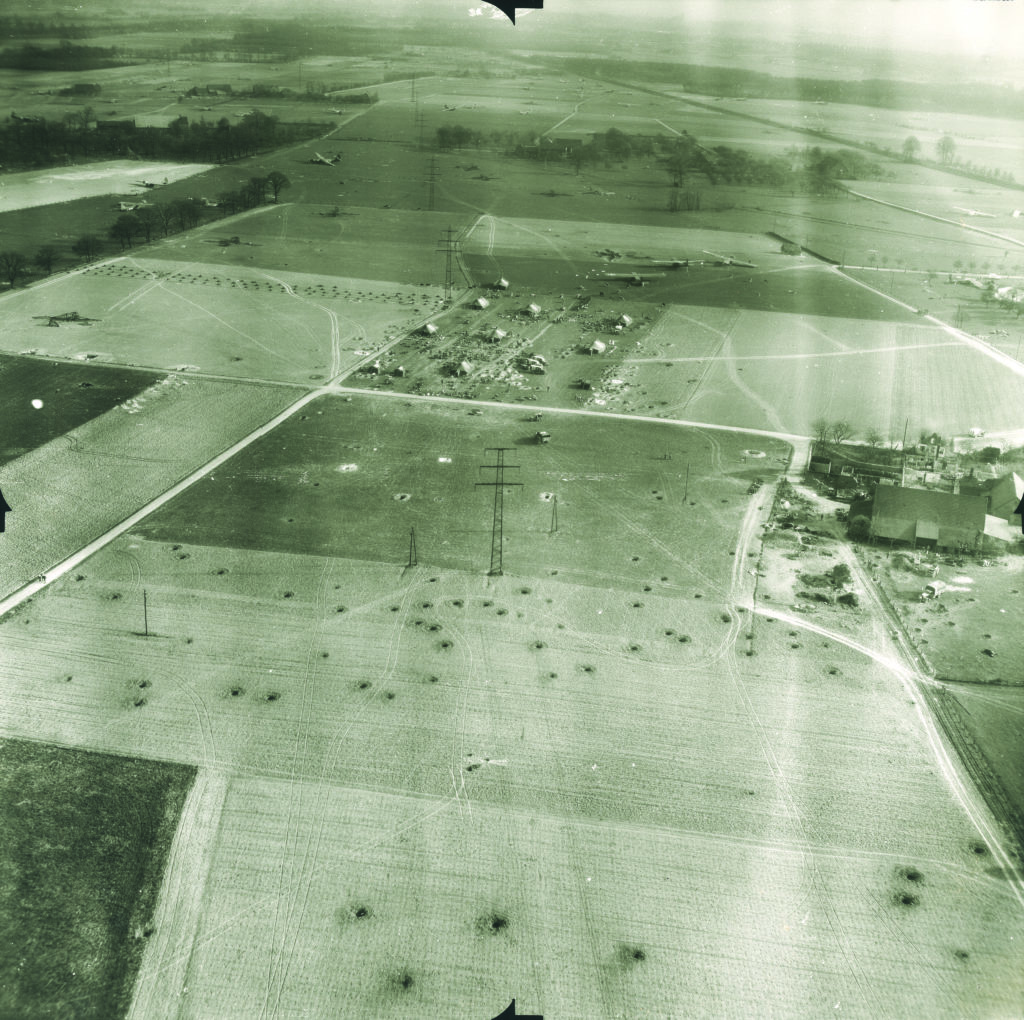
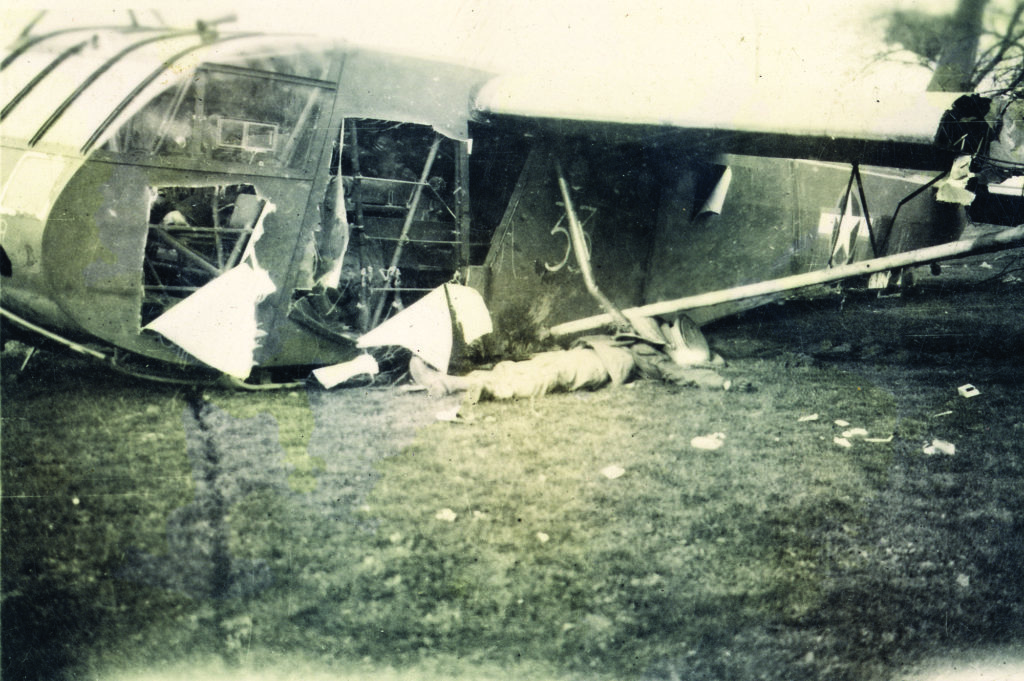
DOWN BELOW, Peter Emmerich, a private—or Kanonier—in a three-gun battery of the Luftwaffe’s 883rd Antiaircraft Battalion, had been finishing his breakfast when the unmistakable rumbling of Allied aircraft filled the sky. There appeared to be no end to the staggered formations; they stretched as far back to the horizon as Emmerich could see. As he stared at the spectacle for a few dread-filled moments, the gunners swiveled their 20mm Flakvierling-38s into action.
The rapid booming of the guns snapped Emmerich back to reality. He followed the trajectory of tracer fire as the rounds chewed through the wing of a C-47, vaporizing its left engine.
The crews hustled. At the gunner’s command of “Laden!” they swapped out the empty magazines for four fresh 20-rounders. Emmerich’s battery commander liked to stagger types of ammunition for maximum damage: armor-piercing, incendiary, high-explosive. Repeat.
When the gliders released overhead, Emmerich’s section chief ordered the gunners to ignore the C-47s: “Aim for the gliders!”
As the first glider neared Emmerich’s position, the gunner gave it a full burst, emptying all four barrels into it. The right side of the glider shattered, losing the wing and rear stabilizer. It crumpled into the ground. So many aircraft were overhead, “We did not have to aim anymore,” Emmerich recalled, “just point our guns in the air and fire. We would have always hit something.”
All three guns in the battery were firing at their full rate of 1,000 rounds a minute; soon the surrounding field was littered with heaps of twisted metal-framed gliders on fire. Two dead bodies lay nearby, and the air was heavy with a sick burning smell.
ABOARD THE DESCENDING GLIDERS, squad and platoon leaders leaned between their two pilots to peer out the cockpit windows, scanning the terrain below for landmarks. Smoke from the river assault had drifted over nearby farmland, blanketing everything. As they got lower, ground details emerged. Some leaders, like Lieutenant Frank Dillon, were able to spot his platoon’s assembly point: a triangular patch of woods bordered by a dirt road. Dillon called out the distance and direction to his men as they braced themselves for a rough landing.
Out of the fog, a power line loomed. The pilot pulled up, but the glider’s tail struck the wire, pitching them forward until he could level the craft. The maneuver kept them from crashing but increased their speed, prompting the glider to slam into the ground and skid across the field. Trees ripped off both wings, but the fuselage continued forward, mowing down a row of fence posts before a large tree brought them to a bone-jarring halt. Its trunk creased the cockpit between the two pilots, but neither was injured.
Gliders plunged in from every direction, plowing into the open fields, knocking down telephone poles, bowling through fences, and toppling trees. Germans firing at a glider were often surprised by another landing directly behind them. Several gliders ran over foxholes; in at least one case, a copilot fired his Tommy gun through the nose of his glider, scattering an enemy machine-gun crew as the CG-4A crashed into them.
Small battles erupted across the landing zone as troopers ran from their gliders and the chaos shifted from sky to ground. It was a 360-degree battlefield of barking sergeants, cracking guns, snapping bullets, coughing mortars, and screaming wounded.
Additional waves of gliders brought in more men and heavier firepower: 57mm antitank guns and the howitzers of the 680th and 681st Glider Field Artillery Battalions.
A 680th artillery crew unloaded their M3 105mm howitzer and lugged it out into the field to duel with the enemy guns. They fired first but missed. The German crew didn’t. A second group of Americans wheeled their howitzer into position, splattering the enemy battery with flanking fire. This move was enough to take out several of the guns and bag 25 prisoners. The troopers gave better than they got, but their efforts cost them dearly: two battery commanders were killed within 100 yards of each other, as were 17 troopers, with more than 50 wounded in the melee.
Private Jim Lauria’s 75mm howitzer—one of 12 brought in by the 681st—was trapped inside the glider: the aircraft had hit a wire fence on landing, and the collision had fouled the nose so badly the men couldn’t open it.
After enlisting the help of some glider riders with wire cutters, Lauria finally extracted the howitzer from the glider’s cargo hold. At the same time, one of the troopers spotted muzzle flashes coming from a hayloft, where a German machine gunner was methodically spraying the landing zone. Lauria and crew manhandled the howitzer into alignment and sighted down its tube like it was a rifle. When satisfied, Lauria jerked the lanyard. The 75mm shell whined across the field and flashed into the barn. The explosion lifted the roof off, destroying the hayloft.
In little more than an hour, the gliders had delivered 3,492 troops and 637 tons of cargo—including 202 jeeps and 78 mortars and artillery pieces—into Landing Zone S. The glider riders struck out toward the 10 bridges over the Issel Canal and River.
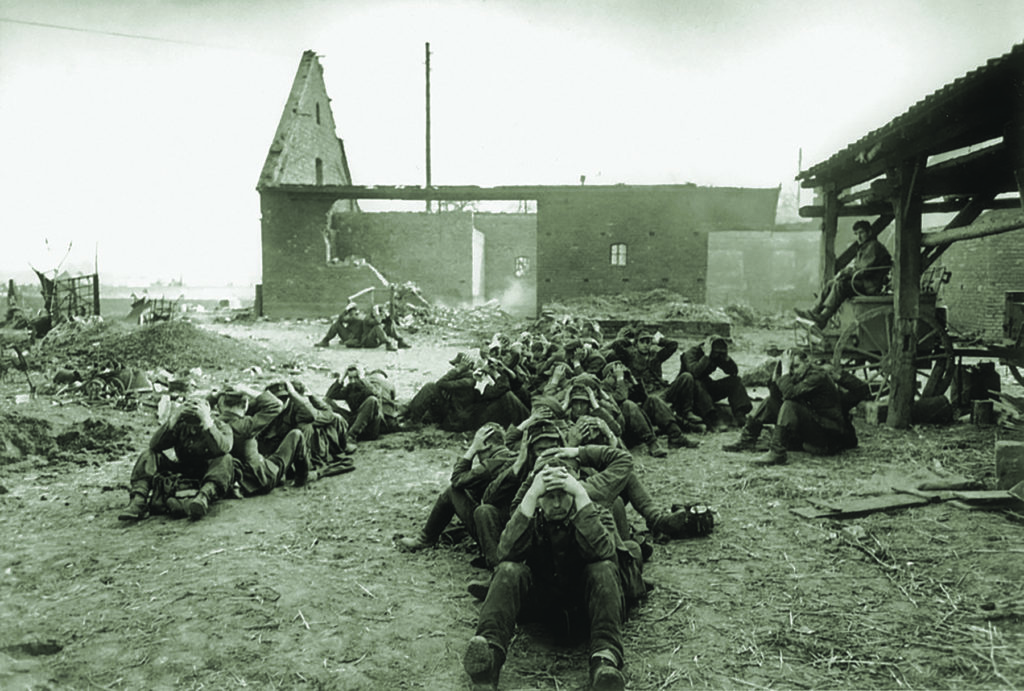
Members of 2nd Battalion’s George Company fought their way across the landing zone, dodging gliders and bullets to attack bridges 1 and 2. Their destination was the far side of the canal, where they were to set up a perimeter and block any German counterattacks.
The troopers went to ground in an open field 600 yards short of Bridge 1. Squads of well-armed Germans had barricaded themselves inside a cluster of industrial buildings, and they quickly pinned down the Americans. Repeated Allied bombings had left the buildings in Wesel little more than shells of heaped bricks, but the defenders made the most of the crumpled urban redoubt. Squads of glider riders scratched forward block by block to reach the bridge.
Two German Mk V Panther tanks clanked toward the Americans, trying to sweep them off their objective. The city’s rubble and splintered beams were a tank hunter’s playground. Private Robert Geist let the first panzer approach within 50 feet before firing a high-explosive rocket from his bazooka into the metal monster. The round impacted with an orange flash and a tremendous shock wave, and Private William Paliwoda took out the second tank from close range as well. The enemy’s first counterattack ground to a halt.
It didn’t take long for German infantry—led by two more Panthers—to make another attack, this time against the troopers digging in at Bridge 2. The situation was precarious. The glider riders’ antitank guns weren’t yet in position, and they were on the verge of being overrun.
In a desperate “ends justify the means” decision, the troopers prodded several of their POWs up onto the road at gunpoint, using them as human shields. The German attack stalled, allowing one of the antitank crews to wheel their 57mm gun into position.
The German tanks spotted it and cranked their turrets around for a shot. Shells shrieked back and forth in a race for the first hit. The troopers scored first, knocking out one of the 44-ton Panthers. They reloaded and ricocheted a round off the second panzer. The other Panther’s muzzle barked, and the round slammed into the antitank gun with a devastating crash, wounding all four crewmembers. The surviving tank and German infantry fell back.
Farther up the 60-foot-wide canal, troopers of 2nd Battalion’s Fox Company were, by 11:45 a.m., en route to bridges 3 and 4. The company already had two coups to their credit, having separately bagged, within 30 minutes of landing, two regimental command posts and vital intelligence, including maps marked with gun positions surrounding Wesel.
Now, the vast American troop formations cutting across the open terrain proved a tempting target for another Mk V Panther. It opened fire with its main gun from 500 yards. Private Robert Weber unlimbered his bazooka for a Hail Mary—at that distance the tank would have been difficult to hit, let alone scratch. But with what would later be considered a “miraculous hit,” the round either ignited ammunition carelessly stored on the tank’s exterior or, if some witnesses are to be believed, arched into an open hatch. Beyond dispute was the result: the tank all but disintegrated, bursting into flames and engulfing the trapped crew in an inferno.
After knocking out several German outposts at bridges 3 and 4, Fox Company captured the overpasses intact. With heaving shovels and flying dirt, they dug defensive positions to fortify their perimeter on the far side.
Farther northwest, along the river at bridges 5 and 6, elements of the 1st Battalion had seized control within 15 minutes of landing. Still, they were having trouble keeping their perimeter secure—they’d clear a house only to have it later reoccupied by lone snipers. After chasing them out a few times, the troopers simply blasted away with bazookas to burn the houses down.
The troopers tasked with seizing bridges 7 through 10 found them well-protected by dug-in German infantry armed with prodigious numbers of machine guns and automatic weapons. Particularly stubborn defenders held Bridge 7, firing volley after volley of devastating mortar and artillery barrages.
BY MIDDAY, as more men trickled in, the glider riders entrenched along the canal were strengthening their positions. By then they had secured all of their objectives except Bridge 1, which was still contested by an undaunted German battle group.
To break the Americans’ hold, German units outside the airborne perimeter needed at least one bridge capable of bearing the weight of armored vehicles. German battle groups prowled the banks across from bridges 1 through 4, probing the glider riders’ defenses for a weakness.
At 4 p.m. the Germans launched a concerted counterattack against bridges 1, 2, and 3. Determined to keep a route open, they pounded the American positions with showers of mortar and artillery shells. The glider riders dug their foxholes deeper and waited.
Their attached forward observer, Lieutenant Herman Lemberger, moved toward the attack as panzers lurched toward the bridges. Lemberger needed a better view, so he climbed to the top of the canal bank and radioed instructions to British artillery batteries back across the Rhine. One of the panzer crews must have spotted his radio. The bark of their main gun rocked the tank, and Lemberger disappeared in the explosion of a direct hit. But he had sent the coordinates, and the British gunners had the range. They dropped shell after shell into the enemy formation, chopping the attackers to pieces with salvos of high explosive rounds. It was close. One of the panzers clanked within 10 yards of the main line before glider rider Andrew Adams knocked it out with a shattering shot from his bazooka.
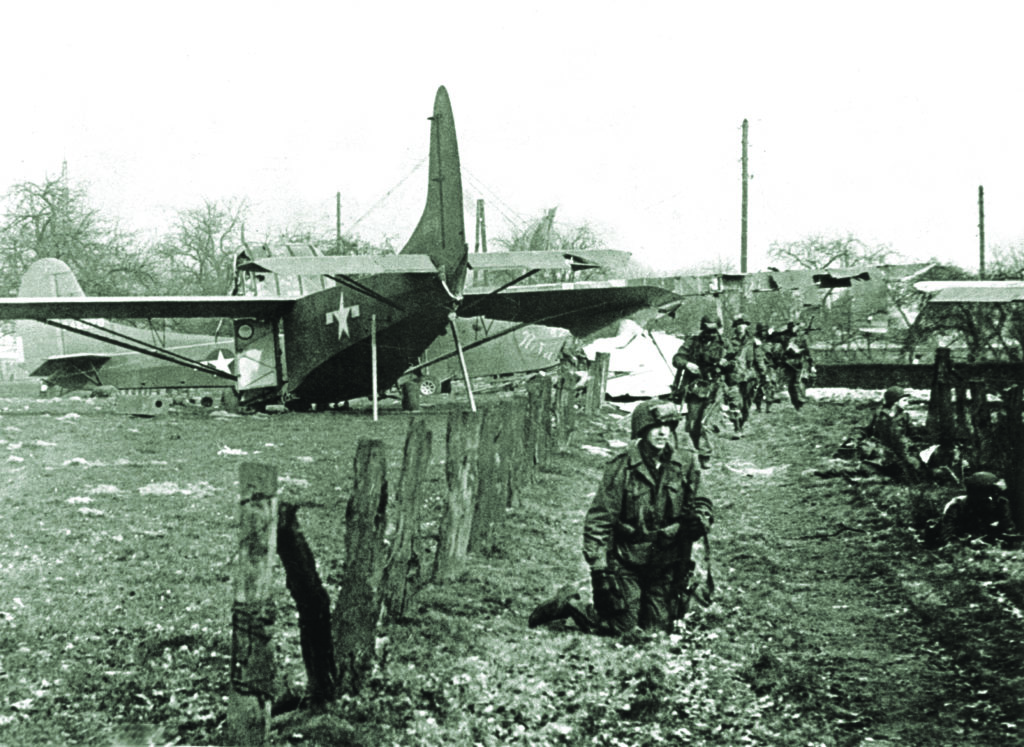
Simultaneously, German infantry attacking Bridge 3 with two Mk IV panzers in the lead threatened to overrun Fox Company. Again, British artillery from the far bank disrupted the attack. The shells splashed viciously into the German columns; their fragments whizzed through the ranks of infantry and sent the tanks scurrying in retreat. The artillery had come to the rescue—but the troopers’ relief was temporary. It was just a question of time before the Germans would try again. After the dust settled, both George and Fox Companies radioed 2nd Battalion’s command post to report they had lost contact with their forward squads at bridges 1, 2, and 3.
As the sun dipped below the horizon on that long day and a light mist formed over the canal, the glider riders braced for a sleepless night. They had fought ferociously since landing that morning and had successfully seized their objectives, but their grip on bridges 1, 2, and 3 was tenuous. It would be at least another 10 hours before Allied tanks, crossing the Rhine on barges and pontoon bridges, arrived to reinforce their perimeter. For the 17th Airborne Division’s troopers, March 24, 1945, was almost over, but they would still have to hold the line until relieved. ✯
This story was originally published in the August 2019 issue of World War II magazine. Subscribe here.

